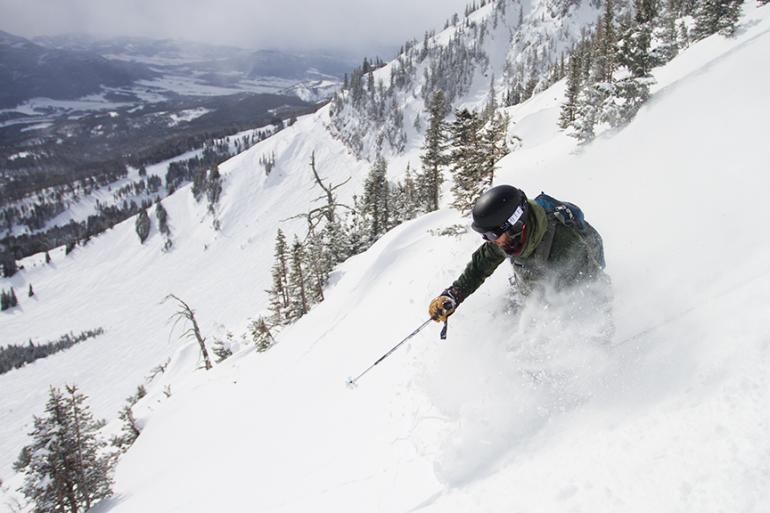Pre-Season Protection
For many of us Bozemanites, the first snow of the year is a tease, an alluring look ahead to the oncoming season. We daydream about the incredible powder days, and gnarly runs that we weren't quite ready to tackle last year, but feel this year might be the one. There will be epic days with friends and the occasional New York–style traffic jam on the road to Bridger. What few of us think about, however, is the potential for injuries and what steps we might take to decrease our risk.
You can't swing a dead cat in Bozeman without hitting an orthopedic surgeon. This is not a random occurrence (except for the cat part)—our active population translates into a large number of winter sports injuries. While I and every other surgeon would be happy to take care of you, you'll have a more pleasant winter season if you can avoid injuries, and avoid us.
It is well known that a disproportionate number of knee injuries, particularly ACL tears, happen late in the day. The generally accepted hypothesis for this is muscle fatigue. As the major muscle groups in your legs (quadriceps, hamstrings) get tired from activity, they function less efficiently; as a result, the ligaments and other structures incur more strain. Early in the day your quad may compensate for unexpected pressure, but when you have lead legs from skiing all day, the the ACL takes full force—and often fails. So if you can resist fatigue, you may reduce ACL injuries. Strength training also plays a valuable role. Threrfore, the most important step to injury prevention is to improve strength and cardiovascular fitness.
Exercise
Although explosive types of training may boost performance on the slopes, for injury prevention, high repetition is probably more important. Training should focis on sub-maximal loads performed to fatigue in order to improve endurance. While the amenities offered at health clubs are certainly helpful, much of the training can occur at home with wall hangs, bodyweight squats, lunges, and planks. Many local trainers offer pre-season "boot camps" to improve skiing fitness. Programs that focus on balance and core strength (abdominals, obliques, and gluteal muscles) can decrease the risk of falling and diminish the damage when one does occur.
Diet
No nutritional supplements that have been shown to decrease injuries. Although specific health conditions may benefit from dietary supplementation (i.e. osteoporosis and vitamin D/calcium deficiencies), for most people there is little to no benefit. Instead, a healthy, balanced diet is always recommended for general health (I always make sure the steak on one side of my plate is balanced by another steak on the other side)—but this is not specific to winter sports. The biggest issue is your overall weight. Your legs don’t care if they’re carrying 200 pounds of muscle or 200 pounds of fat—they’re carrying 200 pounds. The more your legs carry, the more force they withstand and the greater potential for injury. Healthy weight loss is a long-term prospect, and typically occurs no faster than one-half to one pound a week.
Equipment
Gear can play a role in decreasing injuries too. For skiers, appropriately tensioned and fitted bindings can decrease the force that a knee sustains. For almost all winter sports (snowshoers are probably the exception), a well-fitting helmet can help avoid some of the most catastrophic injuries. As a follicularly challenged snowboarder, I also find my helmet keeps my head warm and my goggles in place. For snowboarders, wrist guards can decrease the rate of wrist injuries. This is particularly true during the first season or when FOOSH (fall on outstretched hand) injuries occur.
Many winter sports are inherently dangerous and not all injuries can be prevented. We see phenomenal athletes, such as Lindsey Vonn, with the best possible preparation and gear still miss a turn and suffer the consequences. Following the above steps is not a guarantee of an injury-free season, but it’s start. As our season approaches, get your gear in shape, get yourself in shape, and get ready to go out and enjoy our mountains.
Dr. LeGrand is a board-certified orthopedic surgeon, fellowship-trained in Sports Medicine. He is an active US ski and snowboard physician and is the head team physician for MSU. He practices at Bridger Orthopedics and Sports Medicine.












